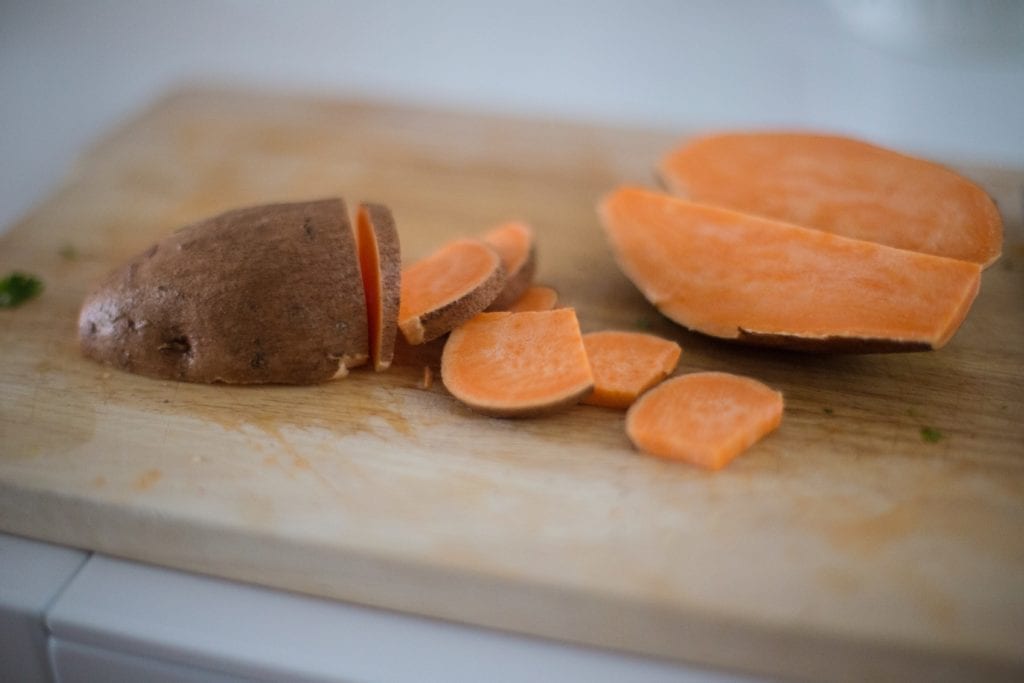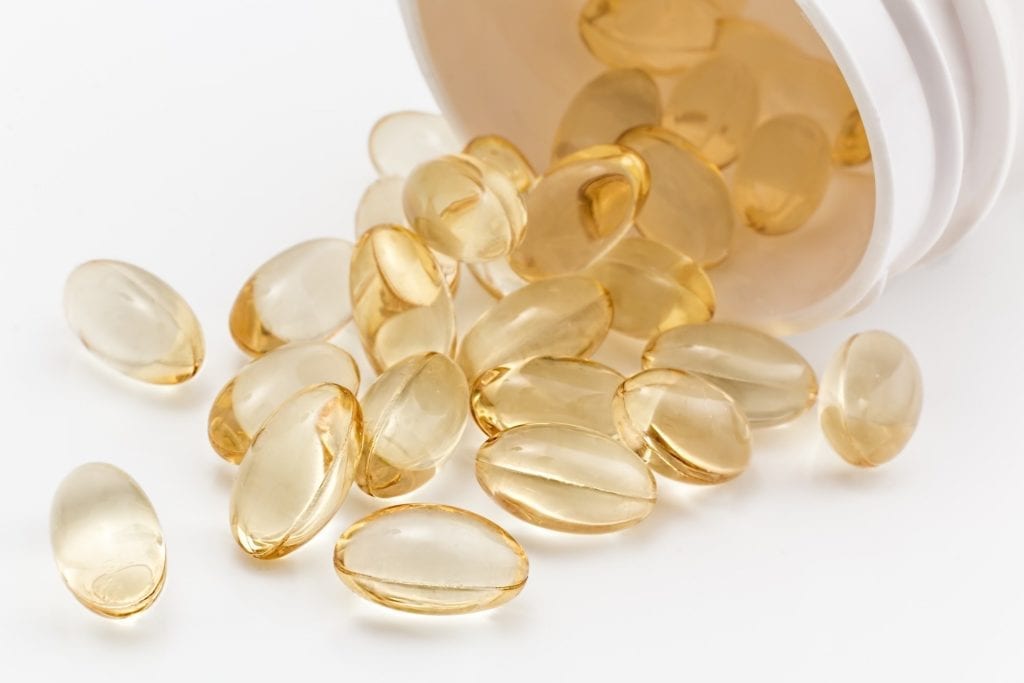Food is an important and vital fuel to our bodies and there are many reasons and findings that prove that paying attention to what we eat is also important in terms of how it can benefit or compromise our health.
When we are unwell, we are particularly careful with what we eat as there is a general understanding that some food can better or worsen our condition and that it plays an important role in giving our bodies the nutrients it needs to heal. Similarly, there is an understanding that eating healthily goes hand in hand with improving our health. It is therefore no surprise that food has long been used to improve and cure some conditions or chronic diseases.
All and all, seeing food as medicine is no new concept, in fact, it might even seem a bit over dated. Having a more functional medicine approach, in the sense of seeing food as medicine, can help us make better informed decision about what and how much we eat to achieve wellness, prevent disease and also manage certain conditions.
Make no mistake, food should not be used as the sole medicine in place of medical treatments!

Although food can have an enormous effect on our well-being, we must remember that it is not a drug and it is not magic and that it should not be used as the sole medicine in place of medical treatments!
The information here available should be seen as a starting point for people who want to take charge of their health and well-being and that are interested in the correlation between food and health in terms of nutrition as science. As nutritional advice is very complex and still an evolving knowledge, it is very important to stress and remind any readers to refer on to experts within areas of nutrition, food and health for personalized dietary plans especially when implemented to improve or cure some medical conditions or chronic diseases.
It is also important to understand that there is a lot of diversity and complexity and that we all carry different genes and that these are going to impact on the way we can cope with different types of food. In other words, while a particular type of food might be used as medicine for one person, it might give different results on someone else.
A quick look at food as medicine in the past

Through time and history, many types of fruits, vegetables and other plant and animal foods have been vastly used, recommended or even avoided for their medicinal effects and properties.
Medieval Europe used Asian spices such as ginger, black pepper and cinnamon not just to improve the taste of certain dishes but also to help maintaining good health. Many other spices and herbs have also been used throughout history to cure and treat diseases. Mint, red fennels and turnip were believed to help cure tuberculosis.
In old traditional Europe, like Greece and Italy, wild green vegetables were considered to play an important part in keeping good health and in recovering from illnesses. These were often eaten raw or boiled with a bit of olive oil and lemon juice. We now know that most of the wild greens like stinging nettles, which is high in vitamin C and was used to cure scurvy and anemia, are a good source of vitamins and micronutrients. It comes as no surprise that in places like southern Herzegovina, a wide variety of wild vegetables are still used today.
We don’t even need to go that far back before bumping into familiar territory. Take cranberries, for example. These berries are being used to treat urinary tract infections, even though there is not much evidence supporting this.

Some of these beliefs have withstood time and, throughout time many studies have been carried out to see whether there is evidence to support their healing proprieties. Okra, a green flowering plant also known as “lady’s fingers”, is a perfect example! Roasted okra seeds, which have long been used in Turkey to treat diabetes, have been studied and proven to have a positive effect on lowering blood sugar. Okra has been suggested to help manage blood sugar in cases of type 1, type 2, and gestational diabetes. It also contains potassium, vitamin B & C, folic acid and calcium and it is also low in calories with a high dietary fibre content.
But just like Okra was to the Turkish, bitter melon was to the Chinese! This fruit contains at least three active substances with anti-diabetic properties, including charantin, which has been confirmed to have a blood glucose-lowering effect, vicine and an insulin-like compound known as polypeptide-p. These substances have been studies and proven to either work individually or together to help reduce blood sugar levels.
The Okinawa people and the sweet purple potato

Many studies have been carried out on the inhabitants of Okinawa, Japan, who are the longest living people in the world. There is very strong belief between the Okinawan people that diet plays an important role in well-being of a person and that certain foods, due to their medicinal qualities, are strongly linked to their longevity.
It was noted that the purple sweet potato, one of their main dietary ingredients, is high in vitamin A, vitamin C, manganese and it’s also a good source of copper, dietary fibre, vitamin B6, potassium and iron. Sweet potatoes are also known to improve blood sugar regulation and some studies have discovered significant antibacterial and antifungal properties. But most importantly, it was discovered that sweet purple potatoes have very high antioxidant levels, a well-known substance that protects cells against the effects of free radicals and which is responsible for the peculiar purple colour of the flesh. Sweet purple potatoes are very high on antioxidants, but so are also other fruits and vegetables like aubergines, blueberries, red grapes and red cabbage.
Foods and treatment today
Over the past decades, masses of evidence have been accumulated building the foundations for the recommendation that the public is receiving today.
Just twenty years ago the recommendation for people affected by Irritable Bowel Syndrome was to eat wheat bran to manage the symptoms. Recent studies have however shown that not only wheat bran did not help, but that it actually made things worse for about 50% of patients. Based on the evidence we have today, it is instead linseed (golden or cracked, added into water, sprinkled on yogurt or in salads) to be recommended to manage symptoms. Similarly, over the past fifteen years, research has shown that by reducing someone’s intake of fermentable carbohydrate can offer them really significant benefits to their symptoms of irritable bowel.

Let’s look now at the advice that was given to pregnant women. In the past they were advised to eat liver because it’s a good source of iron, but what we know today is that liver is a storage organ for vitamin A, which is toxic in high levels. Not something that would be recommended today to pregnant women!
Recommendations change because knowledge changes! Take eggs. Eggs are high in protein and high in energy. But in the ‘70s their popularity hit a wall as it was believed they contained cholesterol, which can make blood cholesterol high increasing the risks of heart attack. But a study in 1995 showed that even eating two eggs a day didn’t have any negative effects on the risk factors for heart disease. What research has taught us is that it is more the saturated fat that influences cholesterol levels rather than cholesterol intake itself.
There are however some foods that seem to improve or worsen certain conditions or diseases. A recent study carried out on 2,000 participants showed that adults who had a high intake of antioxidant compounds from foods like pears and apples, strawberries and red wine had much lower levels of inflammatory biomarkers in their blood. This would reduce the risk for many chronic diseases. Similarly, it is well established that people who have a high intake of fruit and vegetables in their diet have a lower risk of heart disease and stroke.
Food plays also an important part during inflammation when considerable amounts of protein and micronutrients are needed to sustain the rapid cell proliferation as well as nutrients for tissue regeneration. Now, unlike fat, the body has limited stores of protein. If little protein is consumed during recovery, then the protein needed for healing will come from body muscle causing muscle wasting often seen after injury. This is why proteins are important when dealing with an inflammation and it goes to explain why foods like eggs and rich beef broth have been, and still are, used to aid recovery. Zinc has also been known for its beneficial effects in keeping a good immune system as well as wounds healing. Just from this, we can see why successful healing it is thought of being highly dependent on a protein-rich and nutritionally rich diet during the recovery phase.

Similarly, food also plays an important part in rheumatoid arthritis. Did you know that one large epidemiological study undertaken in American women found that soft drinks sweetened with HFCS (High Fructose Corn Syrup) increased the risk of rheumatoid arthritis, while diet soft drinks which contained no fructose had no effect? Crazy right? There is still not much evidence on this subject, but it has been argued that when large amounts of fructose reach the gut they promote the formation of AGE (Advanced Glycation End-products). The thing about AGE is that they are highly pro-inflammatory compounds which if absorbed by the body can aggravate inflammation in the joints. While we are on the subject of rheumatoid arthritis, it’s worth mentioning a Danish study which reported that people who included fatty fish like salmon and sardines in their diet had a lower risk of rheumatoid arthritis. This association has been confirmed by many other studies, due to the presence of anti-inflammatory omega-3 fatty acids in fatty fish. Alternative vegetarian and vegan options for Omega-3 fatty acids are found in foods like flaxseed, seaweed and algae, walnuts, edamame, kidney beans and soybean oil.
Let’s now take a look at diabetes. Studies have shown that, when included regularly in the diet, oats and legumes, such as lentils and chickpeas, can have a significant impact in reducing blood sugar levels for people with this condition.
Research is therefore not only looking at how to cure medical conditions but also at how some foods can be used to treat certain diseases. For example, ginger has been used in pregnancy and travel sickness for a long time due to its anti-nausea properties, but recent studies are currently researching its effectiveness in the context of chemotherapy and cancer treatment as there is promising evidence that ginger can have a role to play to support chemotherapy treatment and cancer management.
Turmeric is also an interesting example. This flowering plant has actually been isolated into a supplement because of its active compound which is curcumin. Curcumin is an antioxidant and it’s only recently that its powerful effects as an anti-inflammatory for conditions such as rheumatoid arthritis, have been investigated. Not only this but it is also been currently investigated in relation the role it may play in cancer management.
The big debate about supplements!

Supplements have always been a topic of much debate. One of the problems is that we are subjected to very convincing marketing campaigns by multi-billion-dollar companies, who have a strong interest in selling their product to us, saying that people need certain supplements to maintain a healthy life. The truth, though, is that it is actually far better to consume vitamins straight from the whole food diet than worry about targeting specific supplements, such as for example vitamin B and C, which end up being just very expensive urine. This is because food should be always considered in its complexity as the various nutrients in foods interact with each other and they behave very differently when isolated.
Let’s take an orange as an example. Oranges are an excellent source of vitamin C, which is water soluble. This means it does not store well in our bodies and that large doses of vitamin C are not particularly useful in normal nutrition. Vitamin C deficiency gives scurvy, but the minimum amount needed to prevent this is just 10 milligrams a day. Normal vitamin C tables are normally 1,000 milligrams. In normal conditions, our bodies don’t need that much. Furthermore, if we eat a whole orange we also get fibre which will also make us feel fuller and offer health benefits to our gut. Finally, we must remember that vitamin C is not just in oranges but in a range of other fruits and vegetables!

When it comes to nutritional advise, the conclusion is always the same: a fresh varied diet rich in fresh fruit and vegetables is all we need! Human bodies are not designed to eat isolated nutrients!
Read the article “Food and nutrition for the prevention and treatment of diseases” to find out more about how food components interact with each other.
There are also a lot of known and unknown substances in food, and eating the whole food will inevitably give us much more than just a specific vitamin. Food also offers so much more than just the food itself in its complexity. Eating food stimulates the gastrointestinal tract through chewing, something a pill will not give us, and sharing a meal can add great value and meaning to our social and convivial life.
However, please remember that there are specific situations and conditions that need to be looked and handled by professionals. If this applies to you, then we strongly advise you to consult a professional.
Are we expecting too much from food as medicine?

We know that food plays an important role in the prevention and treatment of disease, but it is not safe to rely solely on food as a form of treatment. The claims we hear about some foods curing certain complex diseases or conditions, for example cancer, are often overly simplified. We need to be very wary of people’s opinions as these are opinions, not science. Also, just because something has worked for an individual it is not a guarantee it will work for someone else. It is important to understand the fine line between food and dietary patterns that are able to assist and help us keep healthy and food that can heal or cure diseases.
Just because a specific food was used in the past, it does not mean its properties are effective in curing something. It’s important to remember that people had to make do with what they had at the time, which might not mean it’s the best choice.
If you are interested in the specific beneficial effects of a specific food or diet, ensure you do your research, meaning use reputable sources of information and read the stats and scientific evidence, and if in doubt seek professional advice.
Conclusion

All governments around the world make recommendations about what their population should eat in terms of servings of fruit and vegetables as well as dairy products, meat groups etc. What is interesting from looking at dietary surveys, is that most people don’t actually follow those guidelines and that many rely on supplements. It is possible that, due to misleading advertising and the huge amount of misinformation out there, that it is not very easy for people to get the right advise.
Recommendations, as we have seen in the examples above, have changed throughout the history of time and this is because nutrition science is evolving and these changes affect nutrition guidelines and recommendations.
Evidence tells that a varied diet rich in vegetables and fruits is all we need, but to answer the question whether food can be used as the only medicine, we must remember that it is not a drug and it is not magic and that it should not be used as the sole medicine in place of medical treatments! Food can help and assist in keeping healthy but healing and curing is a different thing.



